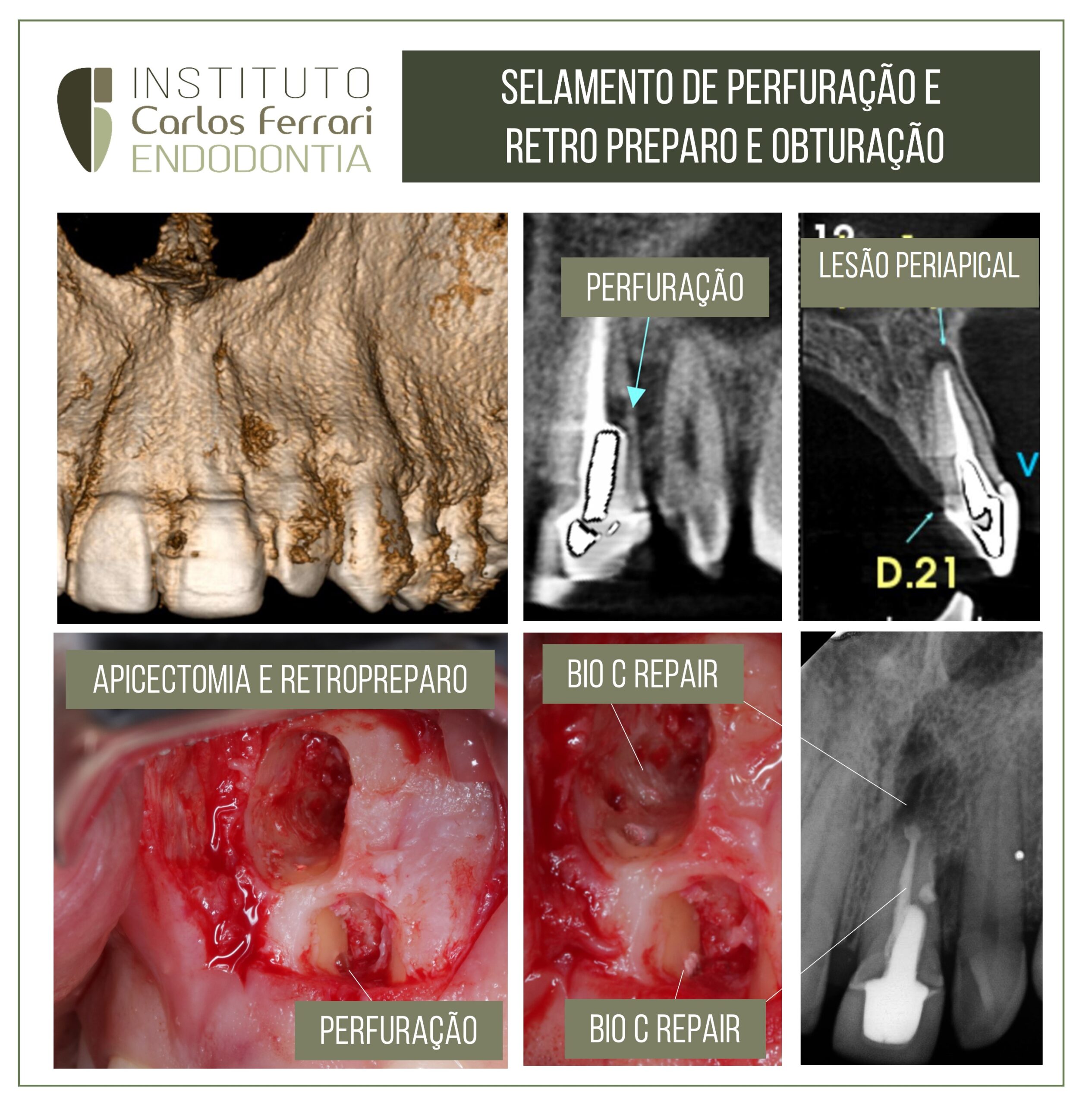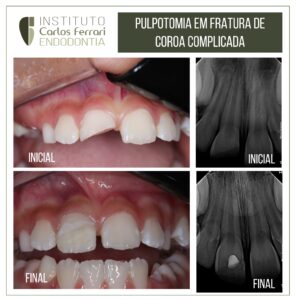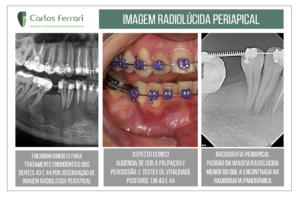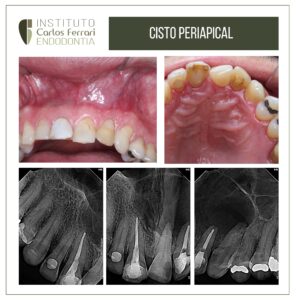Perfuração radicular e biocerâmico. Dente 21 com abscesso apical crônico, imagem radiolúcida periapical e perfuração causada por retentor intrarradicular.
Optou-se por resolução por meio de cirurgia paraendodôntica, com preparo da região da perfuração e retropreparo com pontas de ultrassom, seguido de selamento e retroobturação com Bio C Repair.
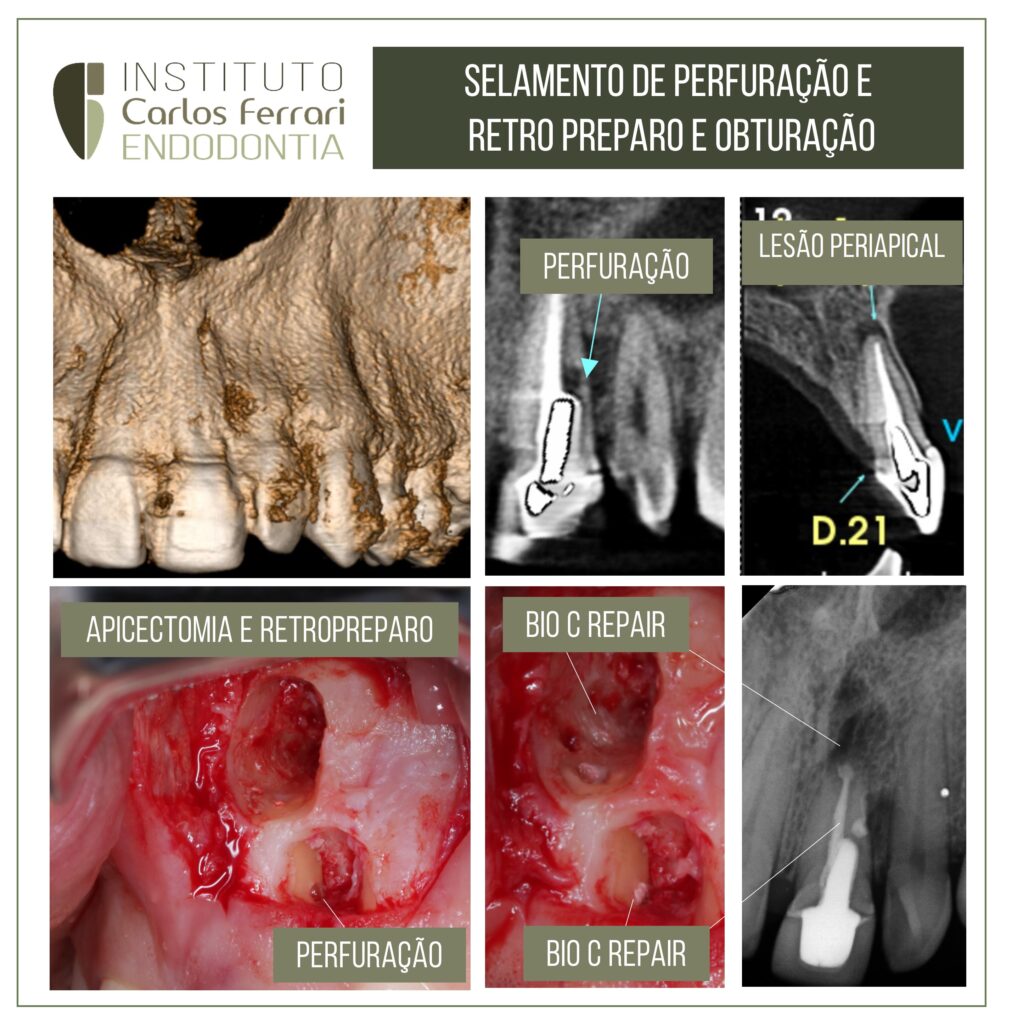
In: Mamede Neto el al. Utilização de cimento a base de MTA no tratamento de perfuração radicular: relato de caso clínico. Rev Odontol Bras Central 2012;21(59).
INTRODUÇÃO
Durante as diferentes etapas do tratamento endodôntico, acidentes e complicações podem ocorrer em razão da complexidade da anatomia dental interna, desconhecimento das propriedades mecânicas dos instrumentos endodônticos, sequência técnica inadequada e pouca habilidade profissional1 . Dentre os acidentes e complicações, os mais frequentes são os desvios
do canal radicular (degrau e transporte apical), fratura dos instrumentos endodônticos e perfuração radicular. A perfuração radicular é definida como abertura artificial de etiologia iatrogênica ou por condições patológicas (cárie ou reabsorção)3 , resultando na comunicação da cavidade pulpar com tecido periodontal e osso alveolar.
Perfuração radicular e biocerâmico. Ocorre principalmente no assoalho da câmara pulpar na tentativa de localizar os canais radiculares, em canais curvos e calcificados, e nas situações de inadequado preparo do espaço protético para pino em dentes tratados endodonticamente6 . São consideradas como a segunda maior causa das falhas e representam cerca de 9.6% dos casos de insucessos nos tratamentos endodônticos.
Tão importante quanto o surgimento dos equipamentos, é a descoberta de novos materiais odontológicos. Historicamente,
o óxido de zinco, superEBA, amálgama de prata, cavit, ionômero de vidro, e hidróxido de cálcio foram utilizados para selar perfurações radiculares, com diferentes resultados. Seguindo essa tendência Lee et al., (1993) foram os primeiros autores a relatarem cientificamente o emprego de um novo material indicado para casos de perfuração em dentes humanos: o MTA (Agregado Mineral Trióxido). A partir de então, esse material tem sido amplamente investigado e os resultados têm apontadoexcelentes propriedades físicas, químicas, e biológicas.
O MTA chamou a atenção de muitos pesquisadores, principalmente por ser material hidrofílico tomando presa na presença de água, propriedade extremamente importante para qualquer cimento odontológico15. A patente foi requerida em 1995,
sendo a partir de então comercializado com o nome de ProRoot MTA® (Tulsa Dental Products,Tulsa, OK, USA). Nela está estabelecido que este material é um cimento Portland comum, do tipo, com maior grau de fineza e presença de óxido de bismuto como agente radiopacificador16. Diante das expectativas de melhorar ainda mais as propriedades desejáveis desses cimentos,
derivações desses materiais surgiram no mercado. O cimento MTA Ângelus®, por exemplo, é composto de 80% de cimento
Portland e 20% de óxido de bismuto.
Perfuração radicular e biocerâmico


